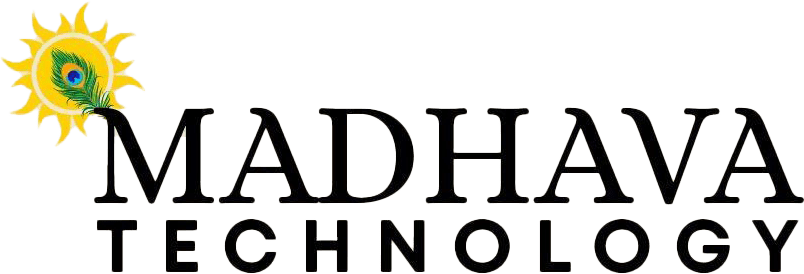E-E-A-T and People-First Content: Your 2025 Guide to Dominating Google SERPs

What is E-E-A-T in 2025
E-E-A-T stands for Experience, Expertise, Authoritativeness, and Trustworthiness, a framework from Google’s quality guidelines used to evaluate content quality and inform improvements to ranking systems at scale. “Experience” emphasizes first‑hand use, testing, or lived knowledge, which helps distinguish authentic insights from generic or auto‑generated text. While E-E-A-T is not a single direct ranking factor, it influences many signals Google’s systems use to surface original, useful, and reliable content.
People-first content, not search-first
Google’s helpful content approach prioritizes content that serves a real audience need, leaves users satisfied, and reflects experience and purpose rather than pages created mainly to attract search traffic. In March 2024, Google folded the helpful content system into its core ranking systems, elevating the importance of people-first content signals across the board. Sites with unhelpful, thin, or generic content risk sitewide ranking suppression, making quality and utility non‑negotiable.
What changed going into 2025
Google’s public guidance continues to stress helpful, reliable, people-first content and adherence to Search Essentials (technical, spam, and best practices) as the baseline for visibility. With AI-produced text proliferating, Google reiterates that original, high‑quality content demonstrating E-E-A-T is what wins—regardless of creation method—so long as it’s helpful and trustworthy. Practically, this means richer first‑hand insights, clearer purpose, and more transparent sourcing are outperforming generic, keyword‑stuffed copy.
How Google evaluates helpfulness
Content is considered helpful when it: aligns to a clear purpose and audience, demonstrates experience or credible expertise, fully satisfies intent, and is easy to consume on all devices. Google encourages creators to avoid fluff and over‑optimization and to update pages routinely so information stays accurate and valuable over time. Helpful content should reduce the need for users to return to search by offering complete, actionable answers on-page.
Core pillars to operationalize E-E-A-T
- Experience: Showcase first‑hand product use, tests, case studies, field notes, or implementation diaries to prove real‑world familiarity.
- Expertise: Attribute content to qualified creators with credentials, portfolio evidence, or verifiable histories aligned to the topic.
- Authoritativeness: Earn references and links from reputable publications, aligned experts, and relevant communities to reinforce topic leadership.
- Trustworthiness: Maintain transparent authorship, sourcing, dates, corrections, secure site practices, and clear contact and business info.
Content formats that win in 2025
- Hands‑on reviews and teardowns documenting tests, data, and photos to demonstrate experience.
- Frameworks, checklists, and SOPs that help users complete tasks with confidence and fewer follow‑up searches.
- Comparative guides that explain trade‑offs, cite sources, and include decision criteria grounded in first‑hand evaluation.
- Case studies showing before‑after metrics, methodology, and lessons learned from real implementations.
On-page practices that reinforce trust
- Prominent author boxes with credentials, links to profiles, and scope of expertise per topic.
- Source citations to primary data, standards, and reputable references; add last updated dates with change logs for transparency.
- Clear UX: scannable headings, summaries, TL;DRs, tables, and mobile-first readability to reduce pogo-sticking.
- Clear site trust signals: about pages, editorial policy, corrections policy, and accessible support/contact channels.
Technical and policy must-haves
Google Search Essentials outline three pillars: technical requirements, spam policies, and key best practices; meeting them is necessary but not sufficient for ranking. Avoid spammy tactics like auto‑generated thin pages, link schemes, or manipulative signals, which can lead to demotion or omission from results. Ensure crawlability, indexability, performance, and structured data hygiene so content can be discovered and understood by Google.
AI-generated content and E-E-A-T
Google accepts AI‑assisted content if it is original, helpful, and demonstrates E‑E‑A‑T; the method of creation is less important than quality and usefulness to people. To succeed, pair AI drafting with human subject‑matter review, first‑hand testing, and robust sourcing to elevate experience and trust signals. Always avoid mass‑producing low‑value pages; sitewide helpfulness matters and weak sections can drag down stronger ones.
Practical workflow to dominate SERPs
- Intent mapping: Cluster keywords by intent and stage; define a clear purpose and success metric for each page before drafting.
- Evidence capture: Run tests, gather screenshots, data tables, and user quotes to embed real experience into your content.
- Draft for completion: Answer the primary query and adjacent follow‑ups so users don’t need a second search; add FAQs and decision aids.
- Trust and UX layer: Add author bio, source citations, update stamp, internal links, and scannable structure with summaries and checklists.
- Continuous improvement: Audit for thin/outdated pages, consolidate overlap, and refresh with new data and first‑hand insights quarterly.
Measurement and iteration
Track task completion proxies like time on page, scroll depth, secondary CTR to helpful internal links, and reduced return‑to‑SERP rates to indicate satisfaction. Pair qualitative user feedback with ranking and click metrics to identify content gaps and opportunities for deeper experiential coverage. Regularly re‑validate technical health and spam‑policy compliance to prevent accidental degradations in discoverability or trust.
Quick checklist for 2025
- Clear purpose and audience defined pre‑draft.
- First‑hand experience or expert input included.
- Complete, actionable answers with unique insights.
- Transparent authorship, citations, and update history.
- Compliant with Search Essentials and spam policies.
By anchoring every page to E-E-A-T signals and delivering genuinely people‑first experiences, sites can build durable visibility in 2025 despite algorithmic shifts and AI content saturation. Treat Search Essentials as the baseline, then differentiate with proven experience, authoritative references, and relentless usefulness to consistently earn top placements

